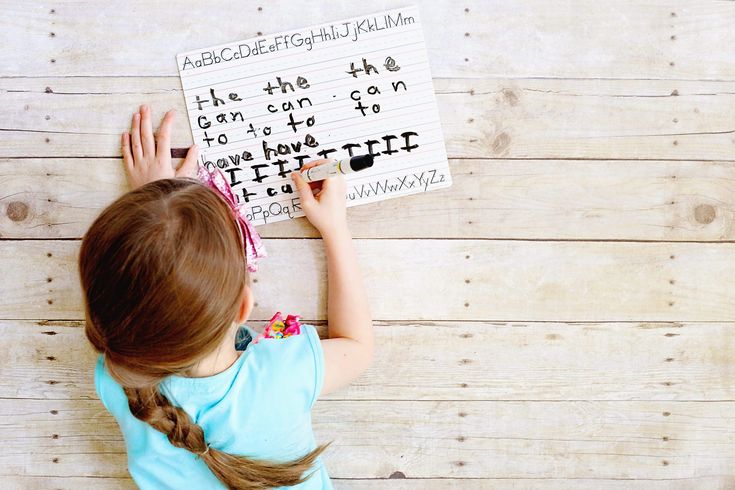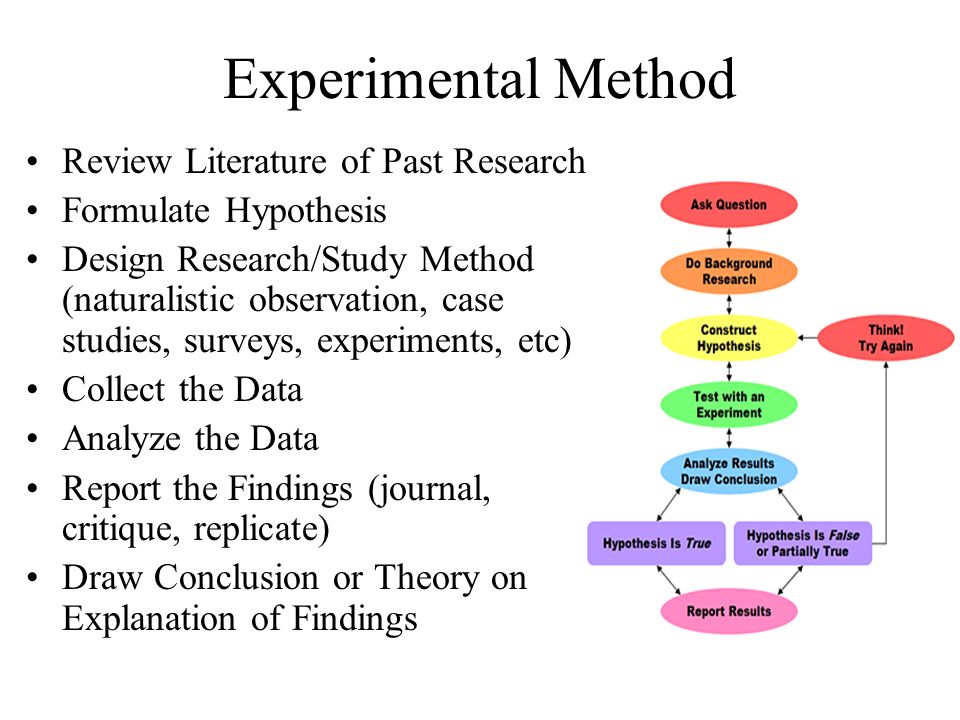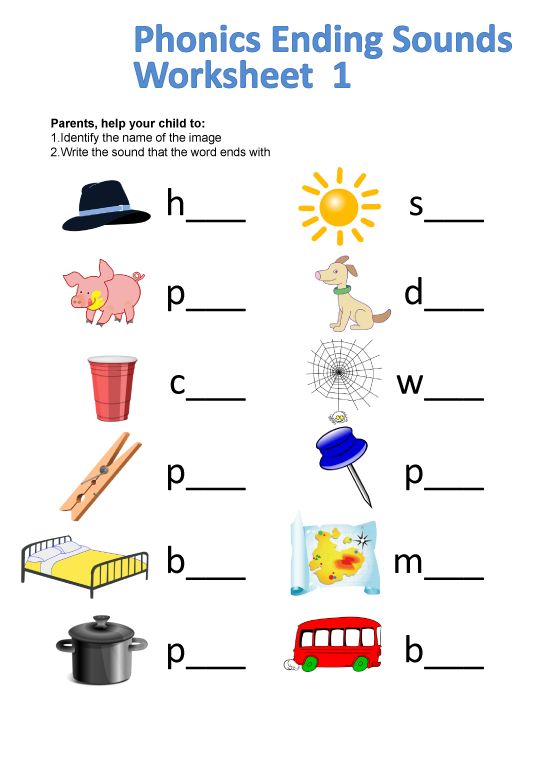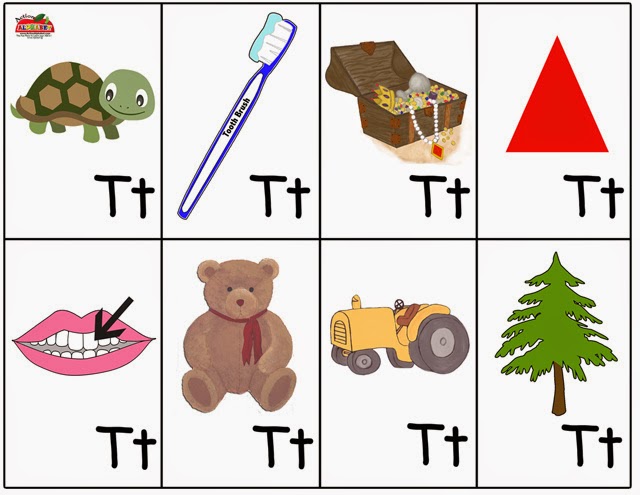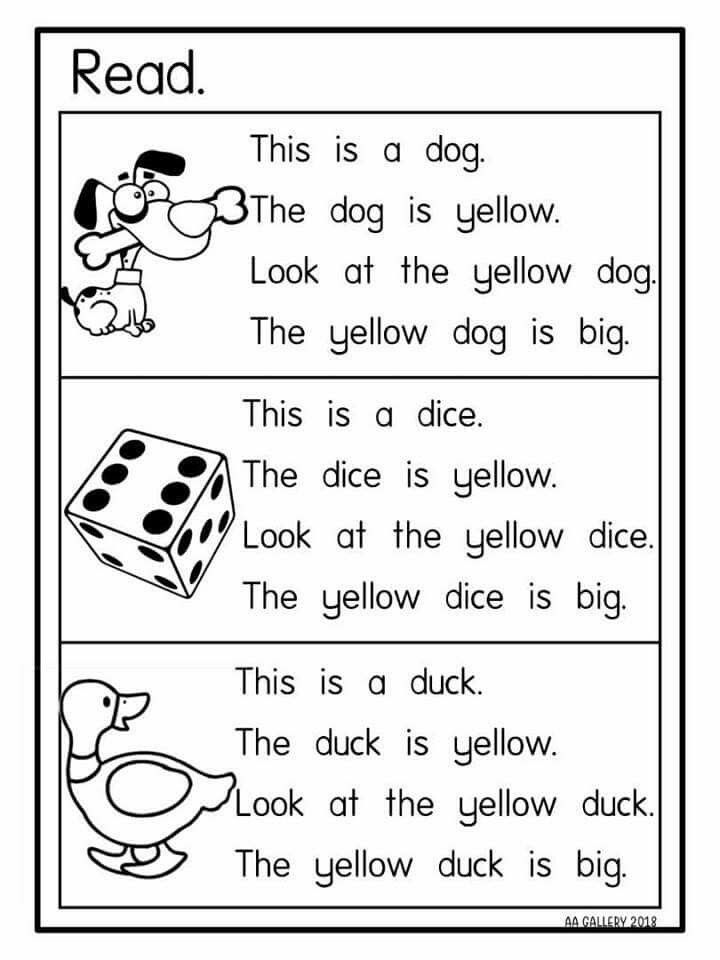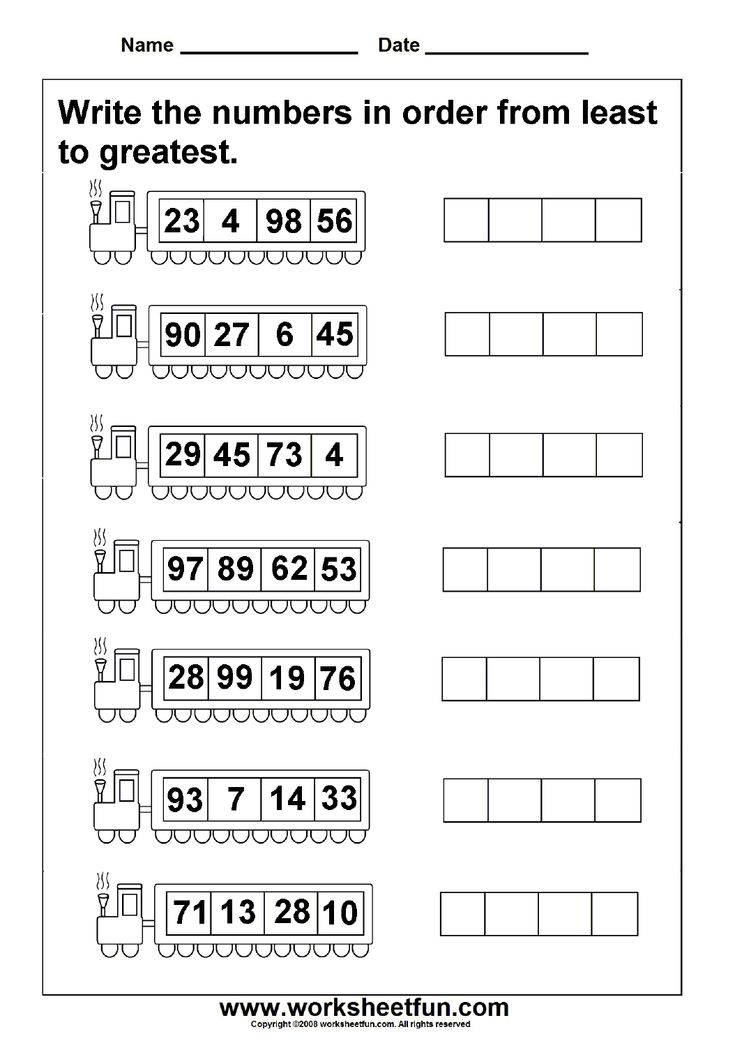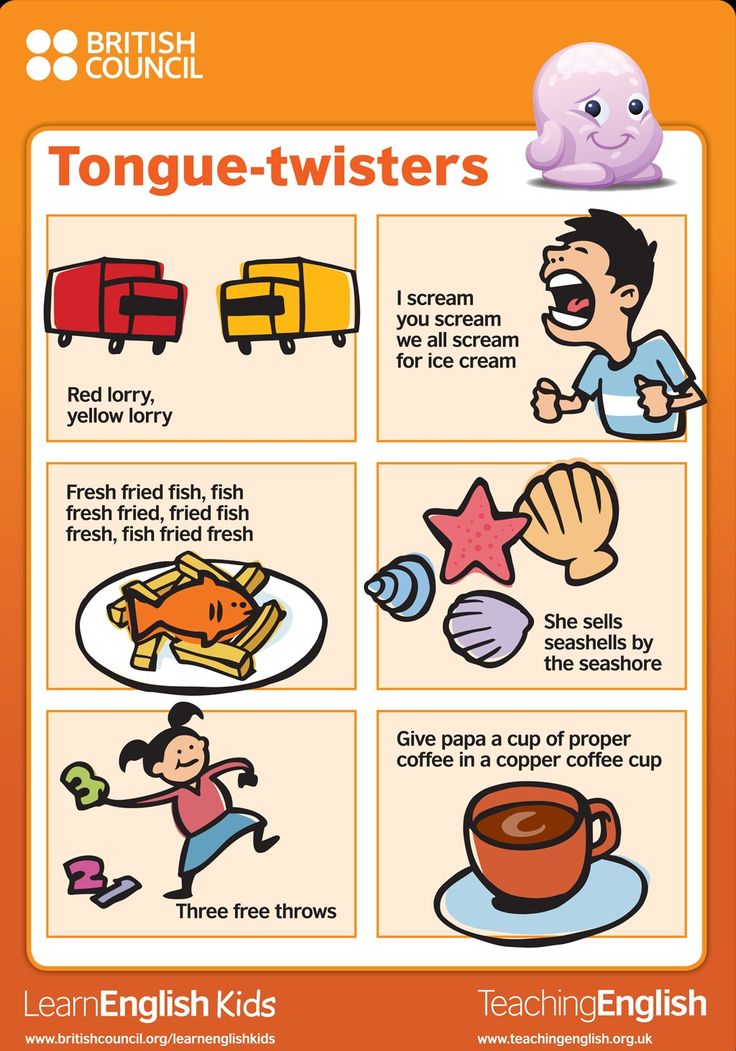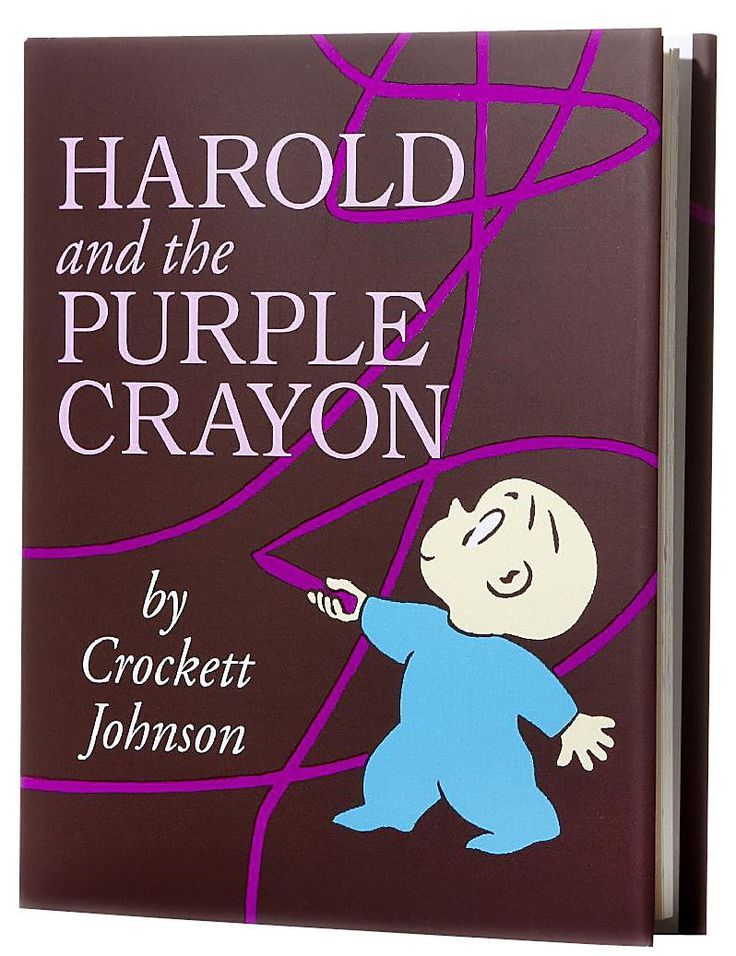Children learn to write
5 Ways to Support Children Learning to Write
One of the most common referrals I get as a school-based occupational therapist and evaluator is in regard to students’ difficulty with handwriting skills. These referrals have at least tripled during the pandemic because kids are on the computer more and have less exposure to handwriting practice, pencil-to-paper tasks, and other related activities that build on complex underlying skills that lead to functional handwriting output.
Writing is a developmental and whole-body process. It incorporates all the systems of the body, including the visual-motor, cognitive-perceptual, ocular motor (control of voluntary eye movement), proprioceptive (sense of self-movement and body positioning), and vestibular (balance), and even social and emotional skills and self-regulation. These all need to work together in order in the seemingly simple task of writing, so it’s no wonder that many children find learning to write a challenge.
If you’re an educator, therapist, or caregiver, it’s important to understand why a child might struggle with handwriting, including the underlying skills that can impact functional handwriting legibility. Gross motor skills, fine motor skills, attention, sensory processing, and visual motor skills all play a role.
Over time, strategies that are concrete and routine can build on the underlying component skills connected to the physiological and cognitive mechanics of handwriting.
Introducing Handwriting Strategies
Be sure to introduce therapeutic handwriting strategies when the child is calm and regulated, and make sure they have as much control over the process as possible. For example, ask them what parts of the handwriting process feel difficult, and have them choose the specific supplies or tools they will use to improve their handwriting. Be sure to explain each strategy to them as you are giving them instructions.
Also, be aware of the fact that when a child is struggling with handwriting, it’s often because of a combination of underlying skill component difficulties affecting handwriting (e.g., sensory processing and fine motor, among the others listed below), so they may need a combination of strategies to make progress.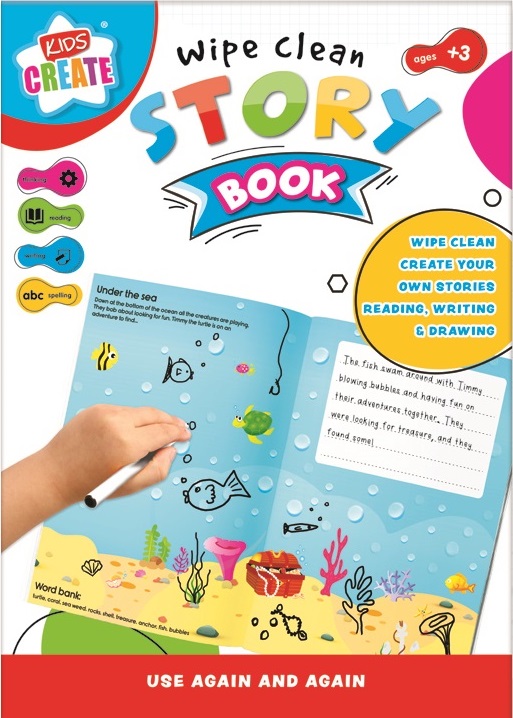
Visual Motor: ‘I-Spy Bean Bag’
An I-spy bean bag can be created out of various materials, including a pencil case filled with small objects such as magnetic refrigerator letters, beads, and even small toys.
Tell the child that when they search for the letters for a sight word (e.g., t-h-e) in an I-spy bean bag, they’re strengthening their eyes and their brain. Then, when they follow up by writing the word, they’re strengthening their eyes and working on their handwriting simultaneously.
Fine Motor: ‘Motor Tool Box’
A motor tool box is a bin of different fun items (e.g., Lego pieces, putty, Play-Doh, and coloring books) that, when handled, can help children build up strength in the small muscles of their hands.
When a child starts to engage with items in the motor tool box, explain to them that doing so helps strengthen the “intrinsic” (inside) muscles of their hands—the muscles that are important for writing.
Attention: ‘Toe Touch Cross’
This is a simple whole-body exercise to do before a child starts writing, especially if they have issues with staying focused.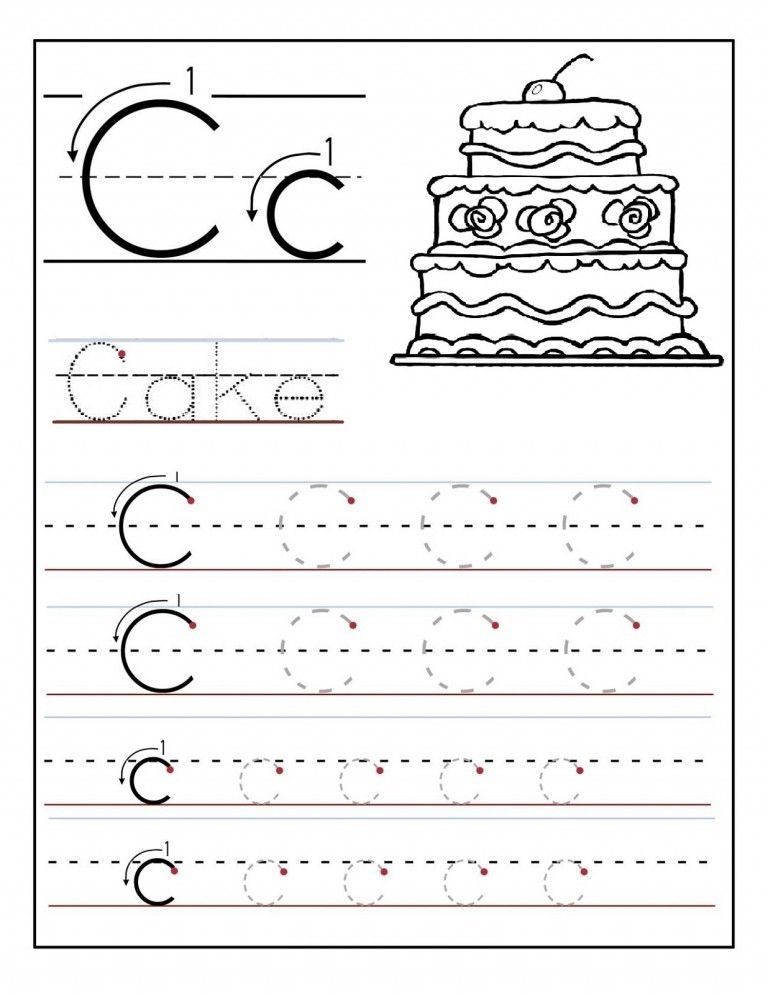 It’s centered around what occupational therapists call crossed midline input, which means that it allows the two sides of the brain to connect. Touch Toe Cross also provides vestibular input, meaning that it engages the balance system and helps keep the body and head steady in space because the head goes below the level of the heart—a calming body posture.
It’s centered around what occupational therapists call crossed midline input, which means that it allows the two sides of the brain to connect. Touch Toe Cross also provides vestibular input, meaning that it engages the balance system and helps keep the body and head steady in space because the head goes below the level of the heart—a calming body posture.
Try telling the child that being focused and calm, while feeling their body, is essential to being able to get their ideas on paper. Tell them to do the following:
1. Stand up with their legs shoulder-width apart.
2. Spread their arms out.
3. Cross their right arm, reaching it across their midsection to touch their left foot.
4. Repeat on the other side.
Sensory Processing: ‘Sensory Bin Writing’
A sensory bin is a tub, bowl, or tray full of rice, moon sand, noodles, or dried beans that a child can “write” in with their fingers, helping them to remember what they write. A sensory bin adds an important tactile aspect that reinforces letter and number shapes in muscle memory.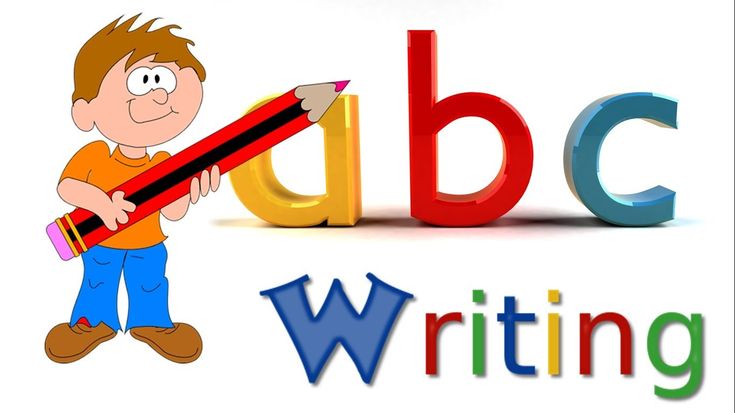
Have the child choose which material they would like to use, or try different things on different days. They can practice writing letters, numbers, or words with their fingers in the bin. This activity also gives children a sensory break; tell them it’s like a change of scene for when their hands get bored by writing all the time.
Often they like to hear that sensory bin practice is a great strategy to use if their body is feeling wiggly or their mind is becoming overwhelmed.
Gross Motor: ‘Trace the 8’
A simple figure 8 or infinity sign can help guide a child’s hands and build gross motor skills.
Tell the child to picture an “8” lying on its side and pretend that they’ve drawn it. Ask them to picture how it looks and imagine that it’s right in front of them. Tell them to take their right hand and trace the imagined 8 carefully, using the whole arm and the shoulder as well, and then repeat with their left hand. Then they can take both hands together, with one fist on top of the other, and trace over the 8 with both hands.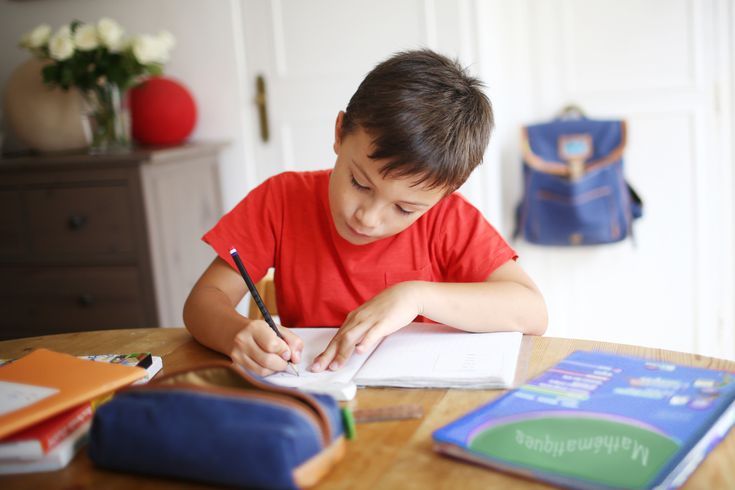
Are We Teaching Kids to Write All Wrong?
“As you can see, individual differences in writing can be seen as early as kindergarten,” says Cynthia Puranik, associate professor in the College of Education & Human Development. On her computer, she pulls up writing samples from two kindergarteners who were asked to print words that they know. One child manages “hot,” while the second, incredibly, executes “somber, “sarcasum” [sic] and “redundant.”
Despite the achievements of the second child, test results show that most U.S. students struggle to meet grade-level writing standards. Puranik is working to improve children’s performance on the page. She studies the early development of writing skills and how educators can effectively nurture good writers. She received $3 million last year from the U.S. Department of Education’s Institute of Education Sciences to study a writing intervention program she developed in which children help teach one another. We recently spoke with Puranik about the importance of writing and the best way to help children learn to do it well.
Your research focuses on how young children learn to write. How early do these skills begin to develop?
If you think about how babies and toddlers learn to talk, they don’t start speaking in full sentences or even full words. They babble, they coo and then eventually you hear the words come out. That’s also what children do in writing. They make marks and scribbles, and those marks evolve in a linear sequence before they start to conventionally write. Children could start doing this as early as two years old.
And those are skills that all children must learn before they can write?
Yes, we refer to them as concepts of print. Before children learn to write, they need to understand that print conveys meaning, that writing is symbolic, that writing (at least in English) goes from left to right. These are concepts children have to understand before they can put words together to form sentences. Then they use marks and scribbles to convey meaning.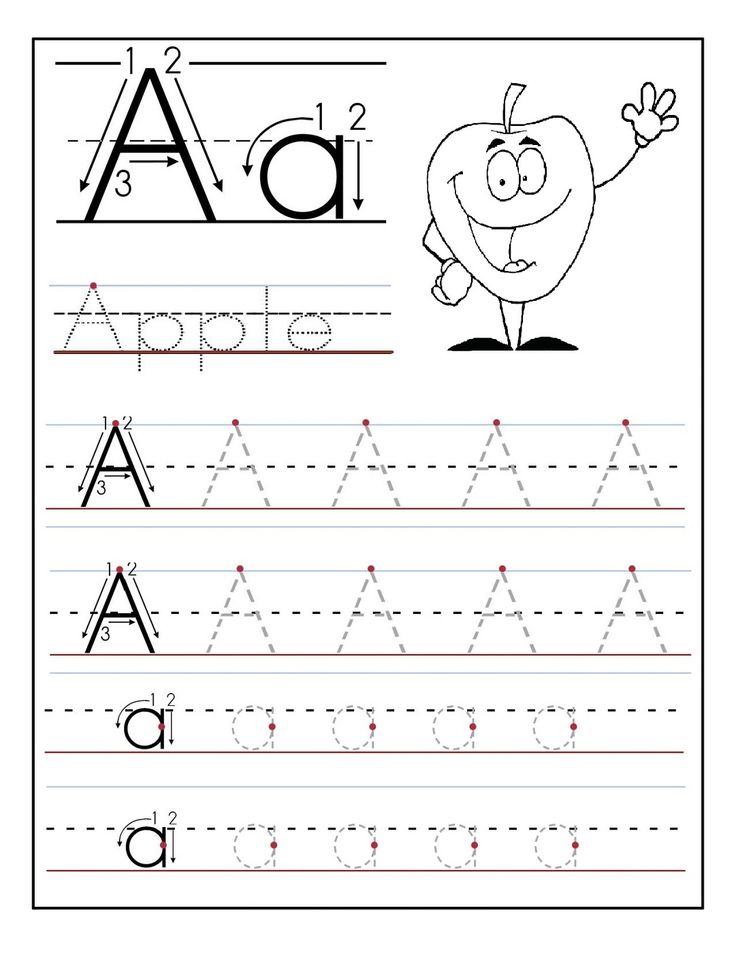 Slowly they learn to write the letters of the alphabet, learn letter-sound correspondences and use that knowledge to spell single words.
Slowly they learn to write the letters of the alphabet, learn letter-sound correspondences and use that knowledge to spell single words.
Spelling also goes through phases. In the beginning, children spell words using only the first letter of the word, so, for example, a preschool child might spell the word bed with just a b, then later with the first and last letter of the word, bd. Vowels are less salient, and so they are harder for young children.
Very often, children will have grand ideas but they’re not always able to translate that on paper. That’s because children need to be fluent in transcription skills before they can free up enough cognitive resources to be able to convey their ideas on paper.
“Teachers sometimes worry that reading will suffer if you dedicate time to writing instruction,” says Puranik. “But I’ve shown in my research that it’s not true.”
How does a better understanding of how writing develops translate to better teaching methods?
For one, learning how writing develops can directly inform what to teach and how to teach writing.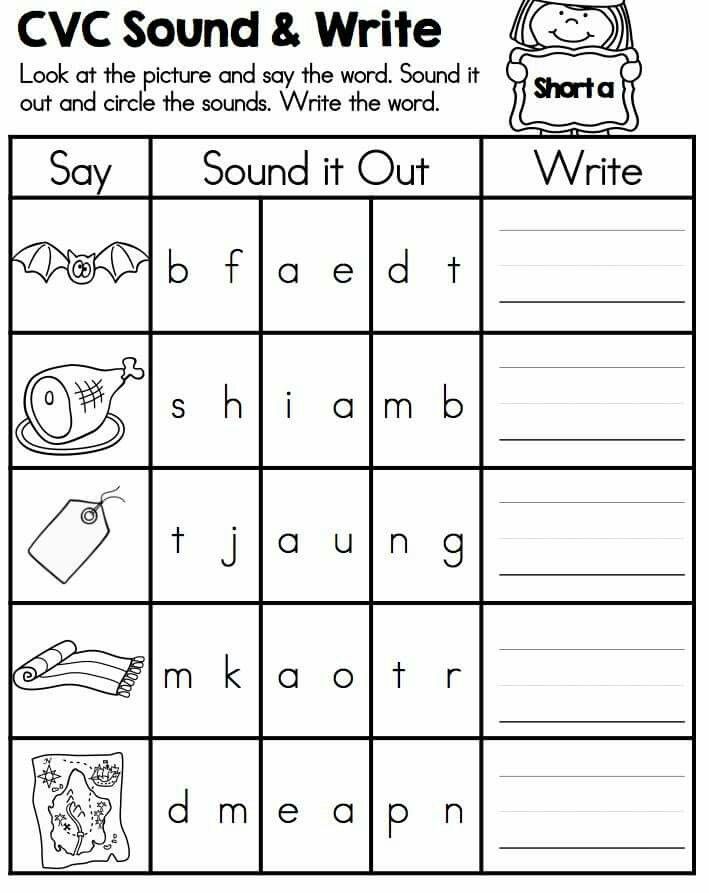 Also, by learning more about how these skills develop in typical children, we can better serve children with disabilities. A big factor in learning is motivation. Especially with children who have disabilities, you have to find ways to motivate them, and writing can be very motivational on some level because it comes from within. Writing leaves a lasting record. I can show you something I wrote and say, “I did this!”
Also, by learning more about how these skills develop in typical children, we can better serve children with disabilities. A big factor in learning is motivation. Especially with children who have disabilities, you have to find ways to motivate them, and writing can be very motivational on some level because it comes from within. Writing leaves a lasting record. I can show you something I wrote and say, “I did this!”
Assessing what makes “good” writing seems like a subjective process. How can teachers effectively evaluate children’s writing?
We do not have good rubrics for assessing writing quality, even for older children. Reading is easier: It’s clear when children make errors when reading, or when they’re reading too slowly. For writing, teachers don’t always know what to evaluate. Is it the amount the child writes? The complexity of the sentences? Whether they can generate ideas versus regurgitate facts? I and other researchers are continuing to refine methods but it is something that needs a lot more study and definitely needs to be emphasized in teacher training.
You’ve created an instruction method in which children help teach one another to write. How does it work?
It’s called Peer-Assisted Writing Strategies (PAWS). We have preliminary research to show that it’s effective. There are two theories about how children develop writing skills. The first is called cognitive-linguistic theory, which focuses on the skills required to write. The second is grounded in social-cultural theories, and says children learn how to write in social context, where their development is dependent on opportunities to interact with parents, teachers, friends and others.
PAWS was created as a perfect balance of both these theories. It focuses on important transcription skills per the cognitive-linguistic theory. And in keeping with social-cultural theory it includes children working in pairs. It’s designed for a whole classroom, and each child works with a peer. The children take turns being a coach and being a writer, and the coach provides feedback to the writer.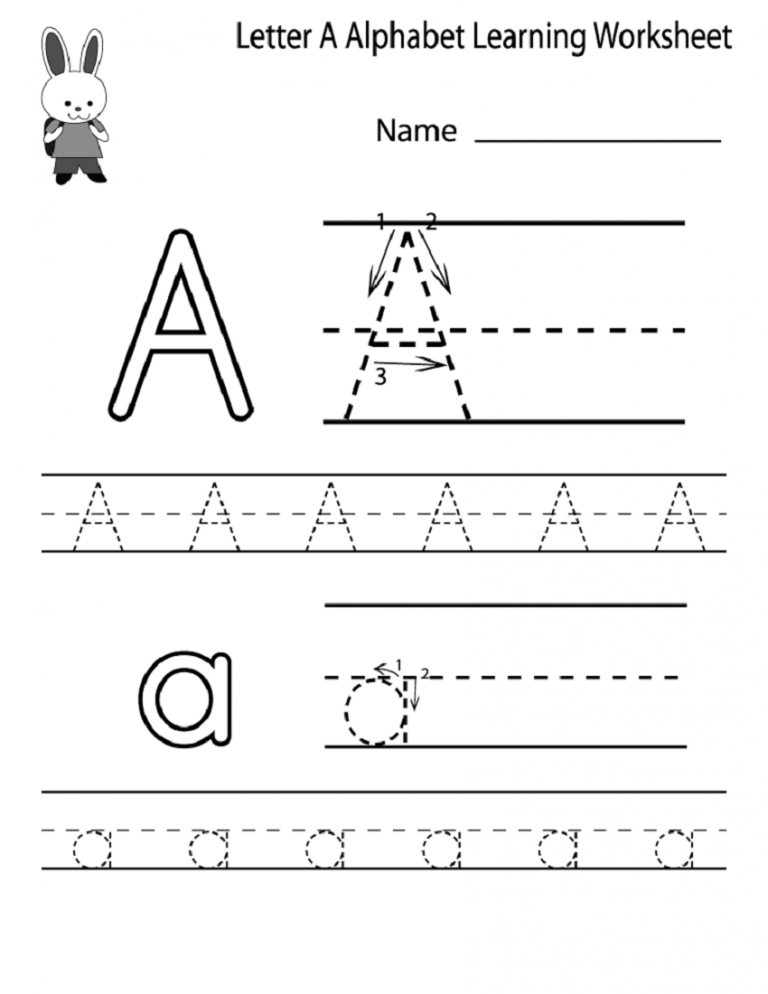 It is designed to build something called “metalinguistic awareness.”
It is designed to build something called “metalinguistic awareness.”
What inspired the idea for PAWS?
This idea came from observing college students. Most people who write poorly, even adults, have no idea they write poorly. Part is that they’ve never been given instruction in how to write. And part of it is they have never been taught to look at their own writing with a critical eye. They’ve never developed metalinguistic awareness. Very often I hear even graduate students saying, “Nobody’s ever told me that before. How come nobody ever pointed that out?”
My thought was, why not start building this awareness at the very beginning? You’d be surprised how good children are at finding errors in each other’s work. And by noticing and correcting these errors, it brings about awareness of their own writing.
You mentioned that even college students may not be proficient writers when they arrive on campus. What do test scores reveal about writing proficiency in this country?
Less the a third of children in the U. S. are proficient writers, according to the National Assessment of Educational Progress. Most students are not writing at grade level, and in my experience even graduate students frequently have difficulty writing at the level that is required.
S. are proficient writers, according to the National Assessment of Educational Progress. Most students are not writing at grade level, and in my experience even graduate students frequently have difficulty writing at the level that is required.
In this country, we’ve concentrated so much on the way we teach reading, but children rarely get instruction in writing. I’m talking about simple academic writing: How to write a persuasive essay, or how to compare and contrast two ideas to make a point. Most students should have these skills by the time they graduate high school, but very often they don’t. It’s why businesses in the U.S. spend something like $3 billion sending their employees to remediation classes for writing.
So, being a good reader doesn’t always translate to being a good writer?
There is some commonality between the two, and most people who are good writers are also voracious readers. But it’s not always the case. Logically you’d think, “If I’m not a good reader, how can I be a good writer?” However, you might have someone who’s a Pulitzer-winning poet who has dyslexia and has trouble reading.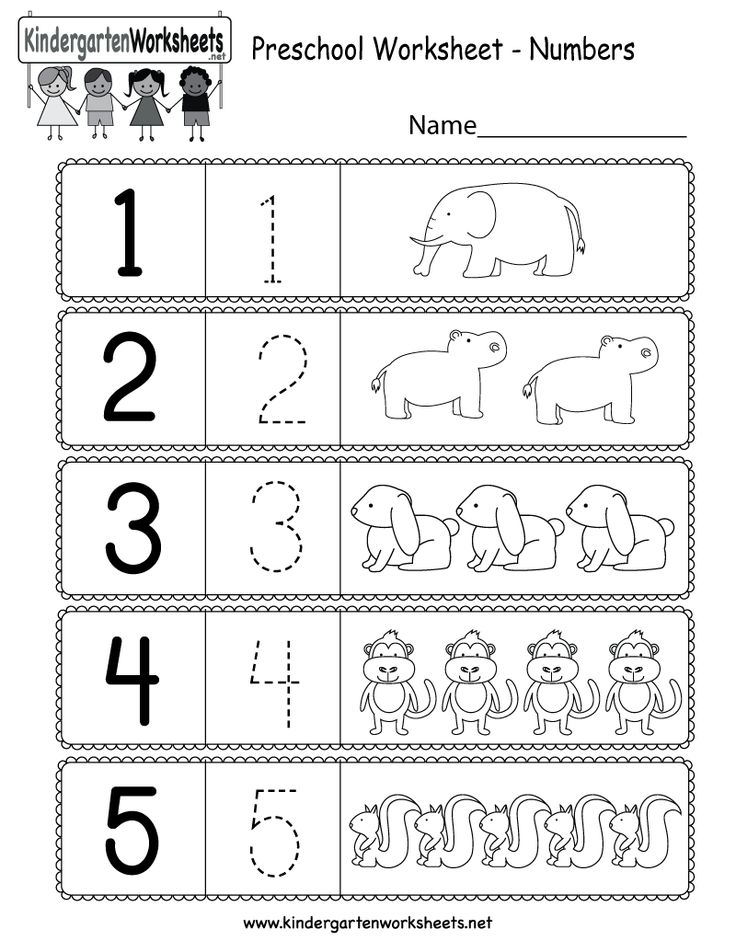
There’s also some research showing that writing has a facilitative effect on reading, meaning the benefits of writing proficiency transcend to reading proficiency. But the opposite is not always true: reading skill doesn’t always translate to writing skill. Writing needs its own instruction and practice.
Teachers sometimes worry that reading will suffer if you dedicate time to writing instruction. But I’ve shown in my research that it’s not true. In one study, we split a group of students into two groups. We took one group of kids out of the classroom for 30 minutes a day, three days a week for writing instruction, and the others remained in the class. Then we compared their writing and reading test scores before and after the instruction. The kids who received the writing instruction not only had better writing scores but they also had higher reading scores afterwards than the kids who did not receive the instruction.
Should teachers address reading and writing together?
Yes; these are not discrete skills, yet educators tend to treat them as such.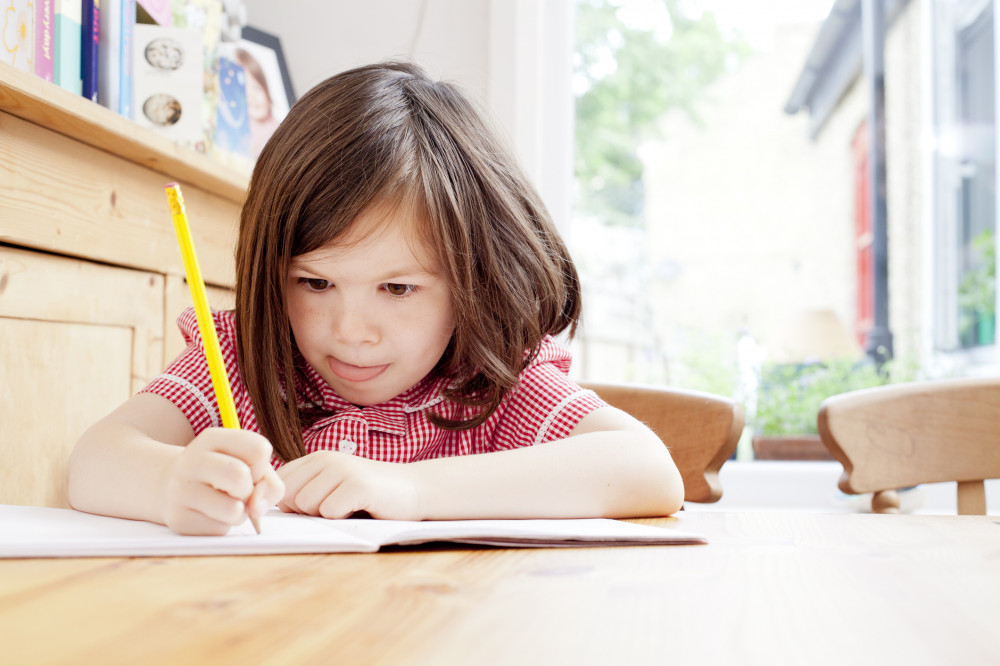 This is true not just for monolingual children but also for bilingual children. Let’s take the example of African-American children who use dialect. There’s a mismatch between spoken language and written language among these children. Oral African-American English (AAE) does not have a written equivalent. Children who speak using an AAE dialect are still expected to write using standard American English.
This is true not just for monolingual children but also for bilingual children. Let’s take the example of African-American children who use dialect. There’s a mismatch between spoken language and written language among these children. Oral African-American English (AAE) does not have a written equivalent. Children who speak using an AAE dialect are still expected to write using standard American English.
My colleagues and I showed in a recent study in Child Development that comprehensive literacy (reading and writing) instruction could help address racial disparities in writing. The study looked at the influence of dialect, specifically AAE on writing, and we weren’t surprised to find that the higher a student’s dialect use, the poorer their writing. But if students had high dialect use but were reading at grade level, then their writing tended to be better. So, in case of AAE-speaking students, it appears that reading has a facilitative effect on writing even in the presence of heavy dialect use.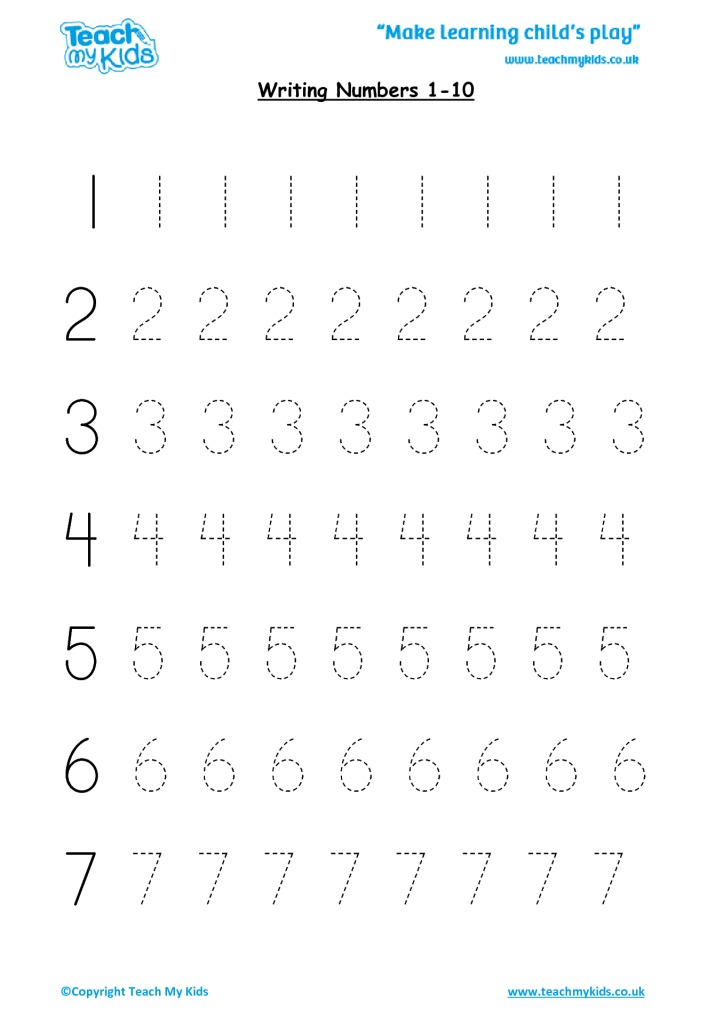 Teaching reading and writing in tandem might be one way to bridge the gap between children’s oral language and written language.
Teaching reading and writing in tandem might be one way to bridge the gap between children’s oral language and written language.
step-by-step instructions with expert advice
And now the first letter, the first word, appears on a piece of paper. Uneven and uncertain. But long-awaited. How to teach a child to write? How can I help him develop writing skills at home? Answers-in our material
Alena Gerashchenko
Author KP
Anna Shumilova
Methodist of the Teacher Platform
Mars Diamond 9000
Director0003
Writing is an important skill that is learned in preschool and elementary school. The opinions of experts differ: someone thinks that it is better not to put a letter to the child at home, someone, on the contrary, is convinced that it is the parent who opens the world of writing to the child. We believe that you can start developing the skill of writing letters at home - learn to draw pictograms, connect dots on paper, draw - not write - letters.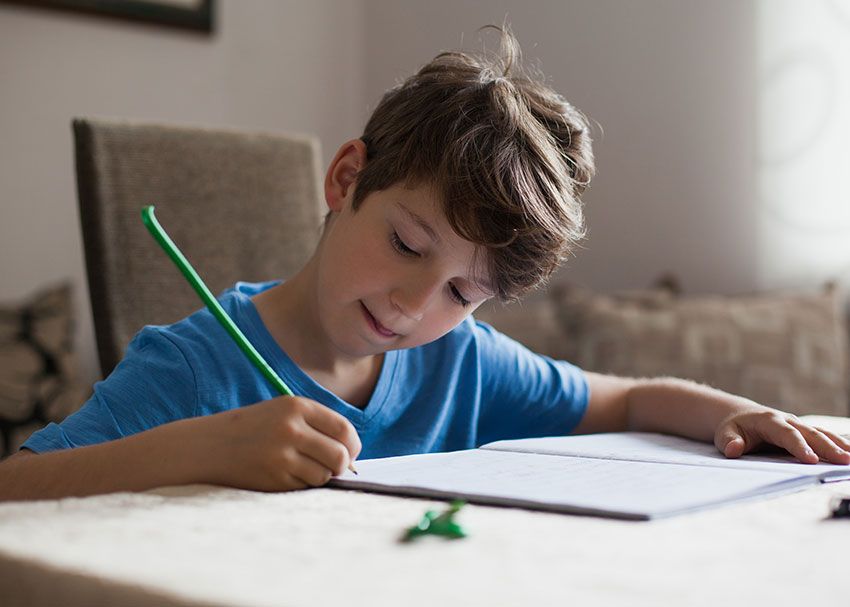 Leave the capital letters and intricate, ornate words to the schoolteachers. Teach your child the basics. Get him interested in drawing, help develop spatial perception of reality, teach hand-finger coordination. We will tell you step by step how to teach your child the basics of writing before school. nine0003
Leave the capital letters and intricate, ornate words to the schoolteachers. Teach your child the basics. Get him interested in drawing, help develop spatial perception of reality, teach hand-finger coordination. We will tell you step by step how to teach your child the basics of writing before school. nine0003
Step-by-step instructions for teaching a child to write
Everything needs a system. In training, a systematic, everyday contribution to the development of skills is very important. Compliance with the following steps will lay the foundation for high-quality development of the child's writing.
Step #1. Get interested
Start telling children in an exciting way what writing is, why it is needed, how it originated and developed. The main thing is to present the story not with dry facts. Do it brightly, colorfully, picturesquely. Show your child photographs of the walls of the Egyptian pyramids, which depict various drawings and hieroglyphs.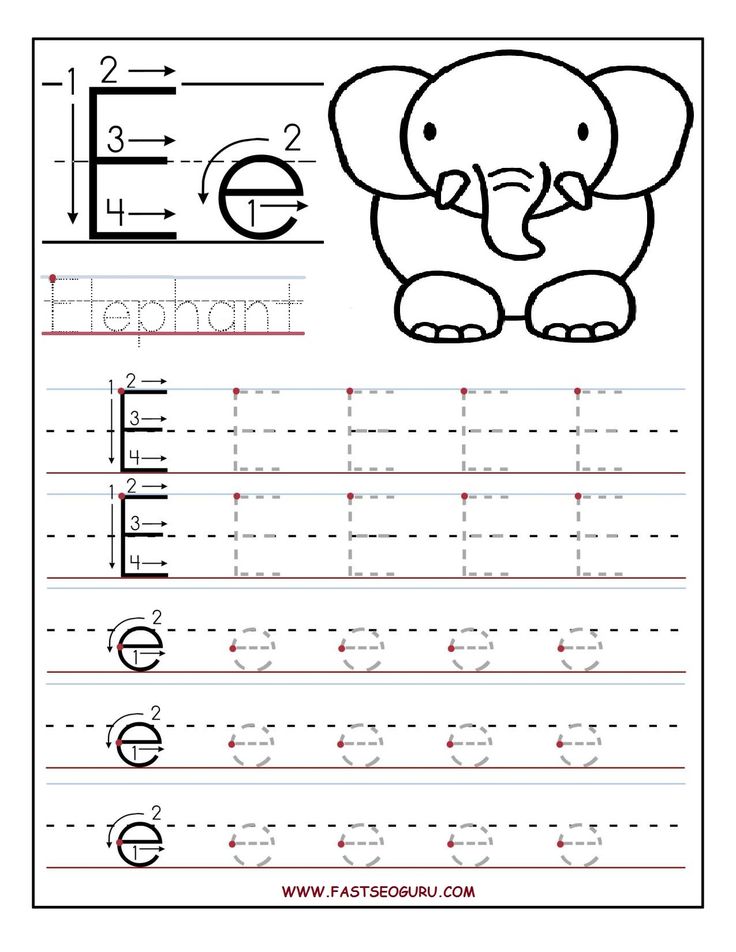 Tell your son or daughter the story of the Novgorod boy Onfim, who wrote birch bark letters in the 13th century, show his monument, and the letters and drawings. The emotional presentation of the story, coupled with illustrative material - all this will resonate with the child. Also invite the child to do the exercises during the stories. Here are a couple of activities to accompany stories that will help your child understand the nature of writing and want to learn to write on their own as soon as possible. nine0003
Tell your son or daughter the story of the Novgorod boy Onfim, who wrote birch bark letters in the 13th century, show his monument, and the letters and drawings. The emotional presentation of the story, coupled with illustrative material - all this will resonate with the child. Also invite the child to do the exercises during the stories. Here are a couple of activities to accompany stories that will help your child understand the nature of writing and want to learn to write on their own as soon as possible. nine0003
Exercise 1
Show your child pictograms (wall pictures that our ancestors used to communicate information to each other), invite him to fantasize and make up an oral story based on the pictures he saw.
Exercise 2
And vice versa: make up a story with your child and invite him to illustrate it in detail with the help of pictures. Such tasks, among other things, develop fantasy, speech and storytelling skills.
After the pictograms, go on to explain ideographic writing. It sounds complicated, but in fact, ideography uses simplified pictograms - symbols. The Chinese language is built on symbolism (principle 1 character = 1 word), designations in the transport sector. Acquaintance with the symbols will be interesting to the child if you pay attention to them during a walk. nine0003
It sounds complicated, but in fact, ideography uses simplified pictograms - symbols. The Chinese language is built on symbolism (principle 1 character = 1 word), designations in the transport sector. Acquaintance with the symbols will be interesting to the child if you pay attention to them during a walk. nine0003
You can teach a child to draw simple images with meaning: for example, two wavy horizontal lines symbolize a pond; crossed circle - prohibition, the word "no" and so on. Stories about ideographic writing and "practical ideography" will expand the horizons of the baby, teach him to perceive the world around him more sensitively, develop creative thinking, and teach spatial perception.
If you feel that the kid is ready for more (he asks questions, draws a lot), tell him about modern writing, about languages. Explain that the Egyptians wrote from right to left - it was inconvenient: hieroglyphs, drawings were smeared by hand. Show your child that writing like this is not very convenient.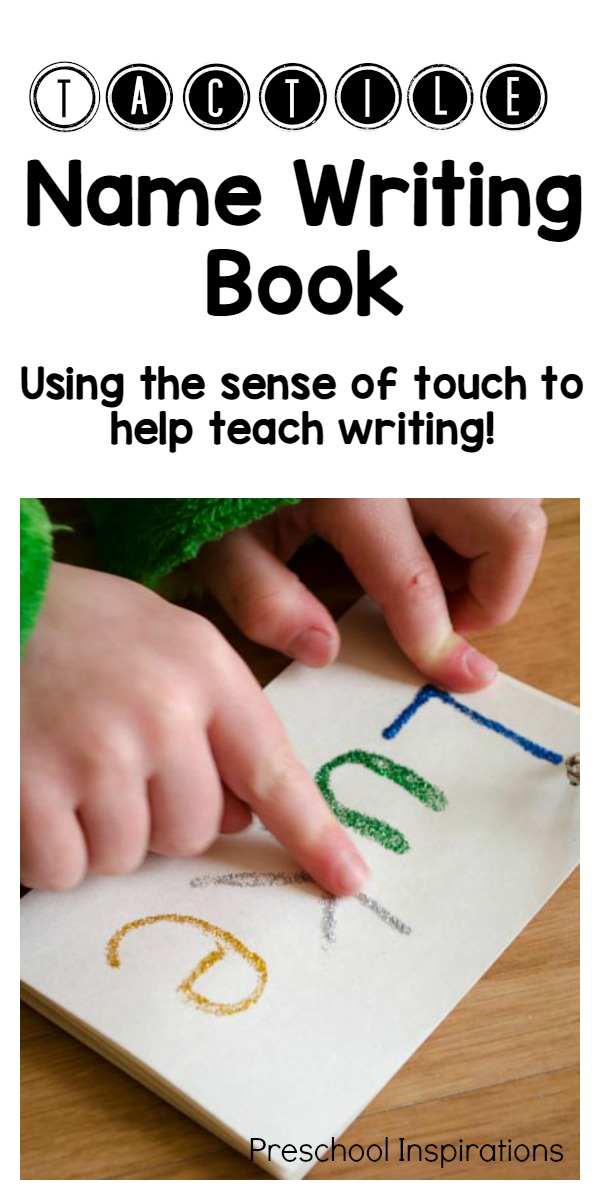 Tell us that we inherit the experience of the ancient Greeks - we write from left to right. Take a digression into history and tell the fidget that Latin was developed from the ancient Greek language, and it became the official language of the church. Latin formed the basis of many other languages (English, German). And our ancestors developed Slavic writing, the Russian language. Conclude that today we use the Russian script, an alphabet of 33 letters. Show the child a primer, study each letter with him. Invite the child to circle each of them with a finger. nine0003
Tell us that we inherit the experience of the ancient Greeks - we write from left to right. Take a digression into history and tell the fidget that Latin was developed from the ancient Greek language, and it became the official language of the church. Latin formed the basis of many other languages (English, German). And our ancestors developed Slavic writing, the Russian language. Conclude that today we use the Russian script, an alphabet of 33 letters. Show the child a primer, study each letter with him. Invite the child to circle each of them with a finger. nine0003
Step #2: Practice Moderately
Spend no more than 15 minutes a day on letter-drawing. Let the child during this time repeat the outlines of the letters from the primer. Let him try to draw them. If the letters are crooked - it's not scary. It should not scare you that the signs crawling out from under the pencil of a novice writer do not quite look like letters. Transform the process of learning to write into a game - sit next to the baby and draw incomprehensible signs of eyes, smiles, legs and arms.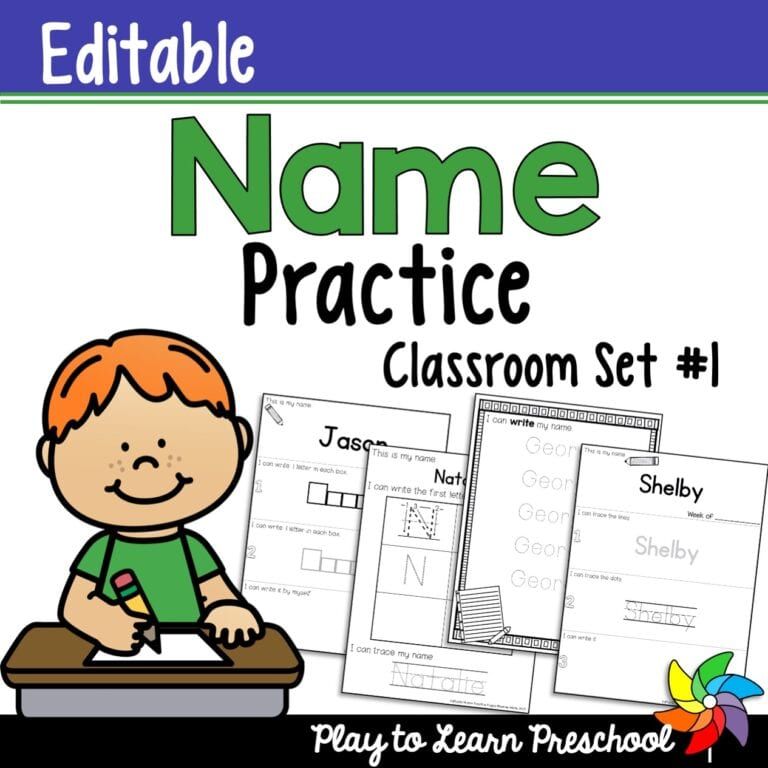 So the child will have more fun. He will trust you, the process, the primer, and next time he will accurately draw a letter, and not a hippopotamus or a fat cat. The main rule is to learn to draw letters for a quarter of an hour. Let the child rest. Even the creativity that the kid is passionate about can exhaust him and discourage him from learning to write. nine0050
So the child will have more fun. He will trust you, the process, the primer, and next time he will accurately draw a letter, and not a hippopotamus or a fat cat. The main rule is to learn to draw letters for a quarter of an hour. Let the child rest. Even the creativity that the kid is passionate about can exhaust him and discourage him from learning to write. nine0050
Spend no more than 15 minutes a day on letter-drawing. Photo: globallookpress.com
Step No. 3. “We wrote, we wrote, our fingers were tired!” Develop fine motor skills
Together with your child, sculpt from plasticine, build towers and wonderful animals from the designer, draw, color, make applications, lay out mosaics, embroider with a cross. Practice daily, captivate your child with creativity and at the same time help him develop fine motor skills of his hands. If he learns to manipulate various small objects, it will be easier for him to learn to write. Fine motor skills training allows you to develop the temporal regions of the brain that are responsible for speech.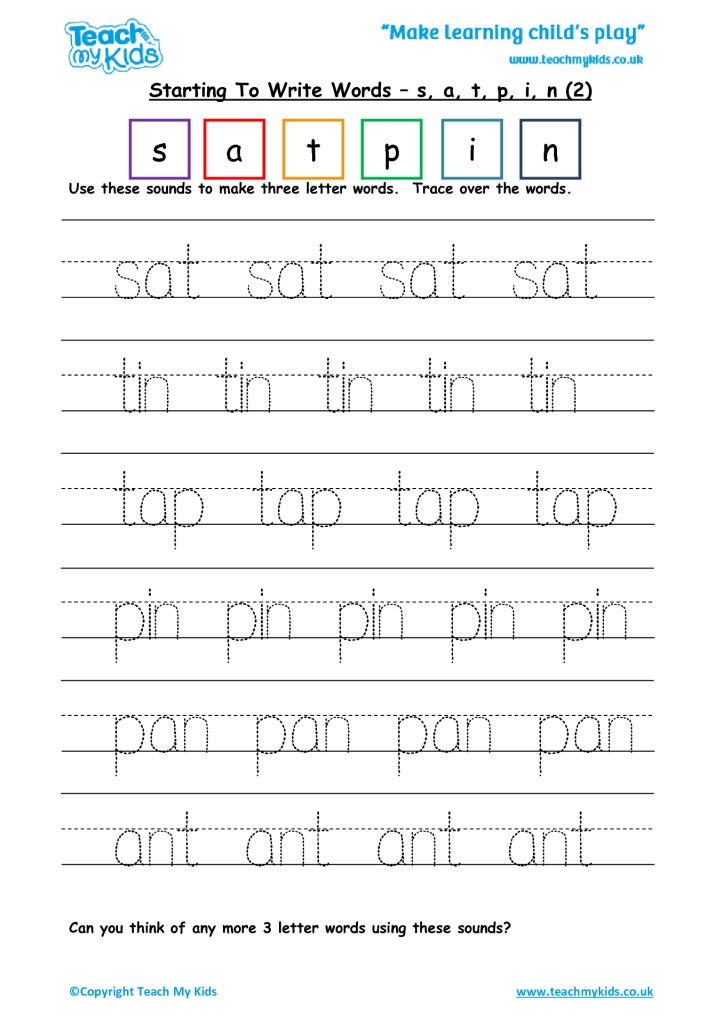 If the baby has good motor skills, he writes well, then it will also not be difficult for him to tell a poem beautifully or come up with a story and vividly present it to his family, classmates, teacher. In man, everything is very subtly interconnected. nine0003
If the baby has good motor skills, he writes well, then it will also not be difficult for him to tell a poem beautifully or come up with a story and vividly present it to his family, classmates, teacher. In man, everything is very subtly interconnected. nine0003
Read also
"Mom, buy": how to deal with children's requests in the shopping center, parental abuse in response: perhaps each of us was an unwitting witness to such heartbreaking scenes. Together with the teacher-psychologist Ekaterina Bolysheva, we learn to avoid mistakes that can lead to children's tantrums in the store0035
The child's back must not be bent by the wheel. Incorrect posture will negatively affect the health of the internal organs of the baby, his psychological state, even the activity of his thinking. Do sports with your child (gymnastics, swimming). Show him how to walk correctly - straight with a slightly raised chin, rushing the top of his head up. Teach him to sit at the table correctly: the child should bend in the lower back, the shoulders should be slightly relaxed, lowered.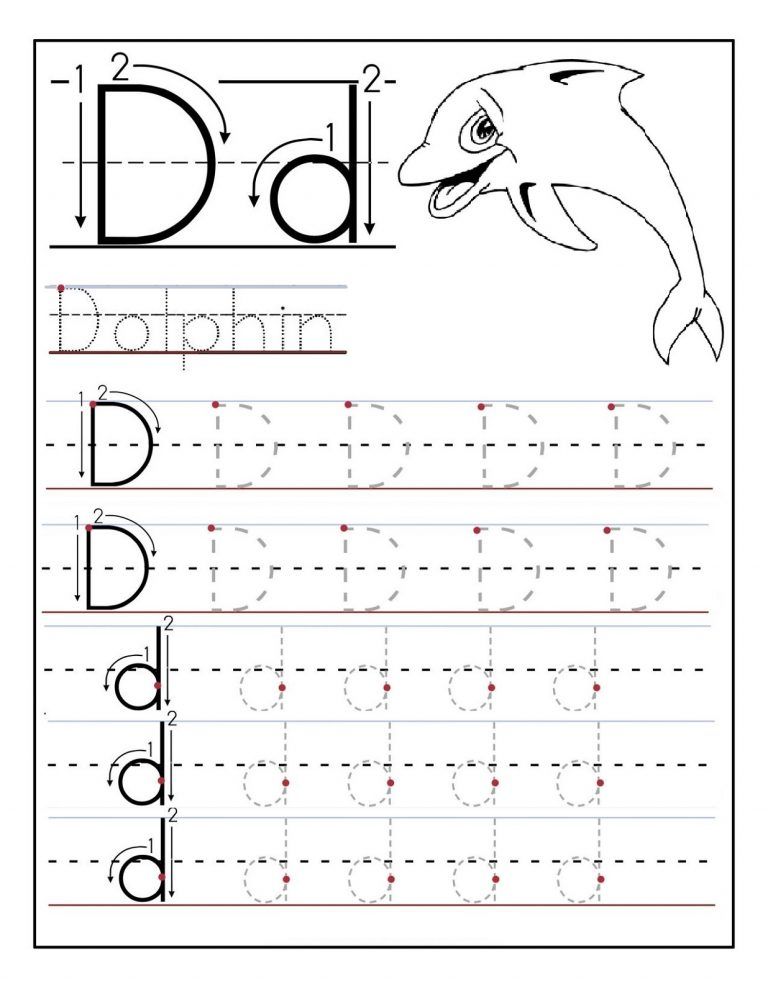 The kid should not lean heavily on the back of the chair and shift the entire body weight onto the table. The muscles of the upper body should be toned and slightly tense, but the neck should not be pulled forward. A slight tilt of the head is acceptable. In any case, consult with your pediatrician about how to properly seat your child at the table. He will suggest effective practices for controlling the muscles of the back, neck, arms and will talk in detail about why it is so important to develop the habit of sitting at the table correctly. nine0003
The kid should not lean heavily on the back of the chair and shift the entire body weight onto the table. The muscles of the upper body should be toned and slightly tense, but the neck should not be pulled forward. A slight tilt of the head is acceptable. In any case, consult with your pediatrician about how to properly seat your child at the table. He will suggest effective practices for controlling the muscles of the back, neck, arms and will talk in detail about why it is so important to develop the habit of sitting at the table correctly. nine0003
Popular questions and answers
How to teach a child to write beautifully?
Anna Shumilova, methodologist of the Uchi.ru platform:
— Is it really necessary to demand beautiful handwriting and perfectly clean notebooks from a child? Some parents are worried when teachers lower their children's grades for the design of notebooks, and they believe that the main thing is to write down the exercise without errors, give the correct answer to the question, and find the right solution to the problem.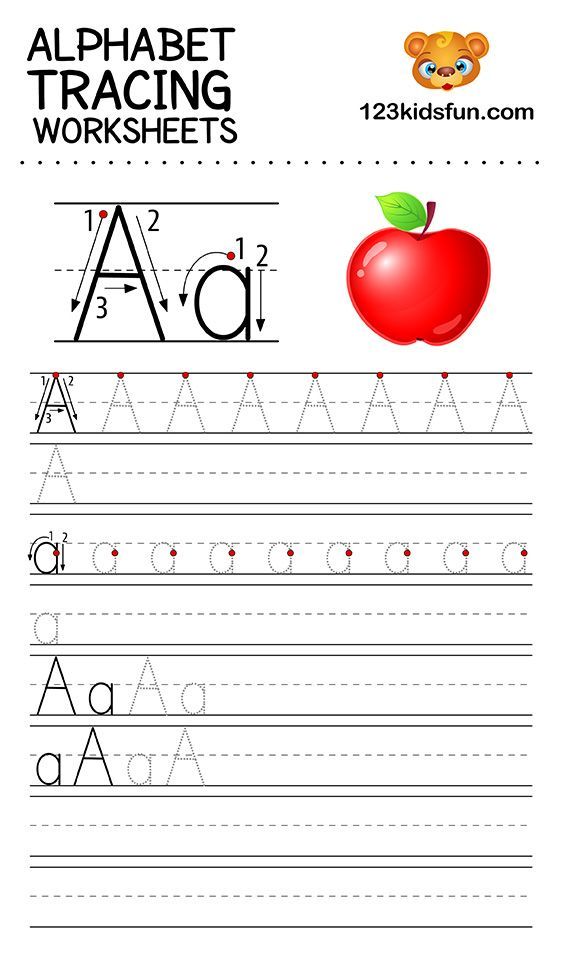 Other parents, on the contrary, force the child to rewrite the work with blots and expect the teacher to spend enough time on calligraphy in the classroom. The truth, as always, lies somewhere in the middle. Any teacher knows from his own experience that in dirty, untidy notebooks there are rarely work without errors. Order and accuracy help to form a harmonious, logical thinking. If the student writes quickly and readably, this becomes a huge advantage for him in mastering the school material. We are of the opinion that the teacher should teach children to write. Any adult person knows for himself that it is quite difficult to change handwriting or the way letters are written. Incorrect spelling of letters will not help either the first grader or his teacher, but, on the contrary, will cause additional difficulties. However, a parent can help. nine0003
Other parents, on the contrary, force the child to rewrite the work with blots and expect the teacher to spend enough time on calligraphy in the classroom. The truth, as always, lies somewhere in the middle. Any teacher knows from his own experience that in dirty, untidy notebooks there are rarely work without errors. Order and accuracy help to form a harmonious, logical thinking. If the student writes quickly and readably, this becomes a huge advantage for him in mastering the school material. We are of the opinion that the teacher should teach children to write. Any adult person knows for himself that it is quite difficult to change handwriting or the way letters are written. Incorrect spelling of letters will not help either the first grader or his teacher, but, on the contrary, will cause additional difficulties. However, a parent can help. nine0003
If you want to help your child prepare for writing, it is best to start with block letters and do no more than 20 minutes at a time. You should also explain to the future student the basic principles of writing.
You should also explain to the future student the basic principles of writing.
1. The line is the letter house. It has a floor and a ceiling. You can not break through the floor and stick out the legs of the letters from there. You can't break through the ceiling and stick your head out like a giraffe. If such a nuisance nevertheless happened with the letters, you can give the child a colored pencil and ask them to underline the hooligan letters and ask what exactly is wrong with them. After that, be sure to underline the letters that turned out to be written correctly, and praise the child. Another great exercise is coloring. We select a small part of the picture and ask to color it without going beyond the outline of the figure. For little naughty fingers, it's not so easy. nine0050
2. When we write letters, we imagine the rails on which the train travels. If the rails cross, the train will derail and fall. The letters should not dance on the line, but stand like soldiers.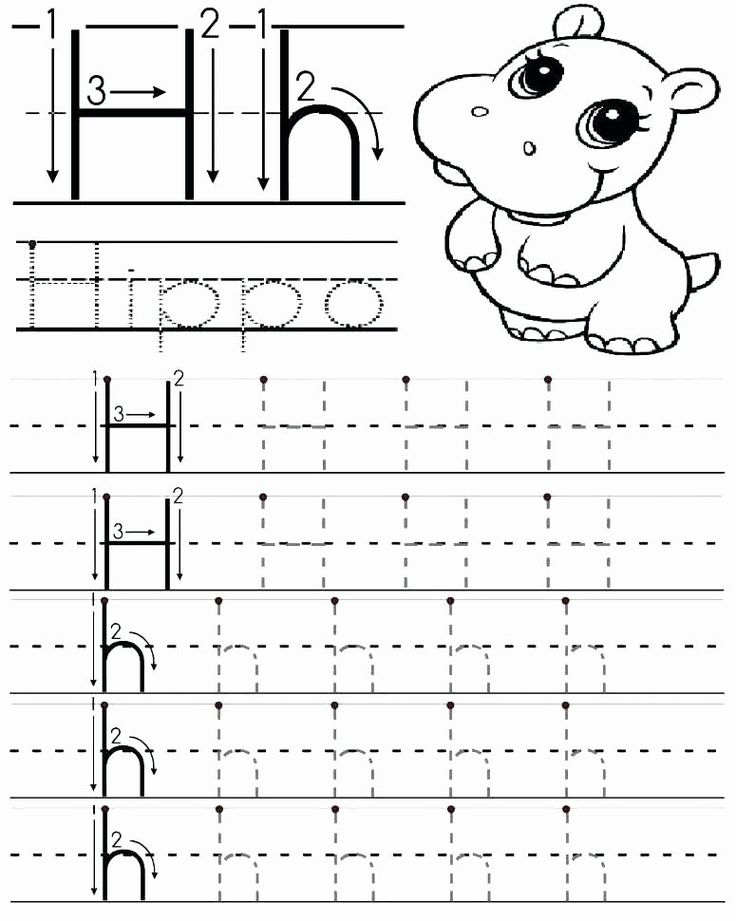 After the kid writes a line, you can take a ruler and draw vertical lines through the letters. If the rails are straight everywhere, then the train arrived wonderfully, and you can put a big fat plus on this line! Over time, the rails may become slanted, but should remain parallel. nine0003
After the kid writes a line, you can take a ruler and draw vertical lines through the letters. If the rails are straight everywhere, then the train arrived wonderfully, and you can put a big fat plus on this line! Over time, the rails may become slanted, but should remain parallel. nine0003
3. Written letters consist of a certain set of elements: sticks, hooks, loops and ovals. As we wrote above, it’s better not to collect letters without a teacher, but it’s worth practicing writing sticks of different lengths. To work with an oval, we can draw a box. The oval should look out the window and not get stuck in it. If a child draws a circle, then his chubby cheeks will not crawl through the window. Cheeks will have to be erased. In addition to writing, we advise you to have an A4 lined notebook. If you don't have one, the regular one will do. First, the parent himself draws a large beautiful printed letter. The child paints its elements in different colors. Then we write giant letters (several centimeters high).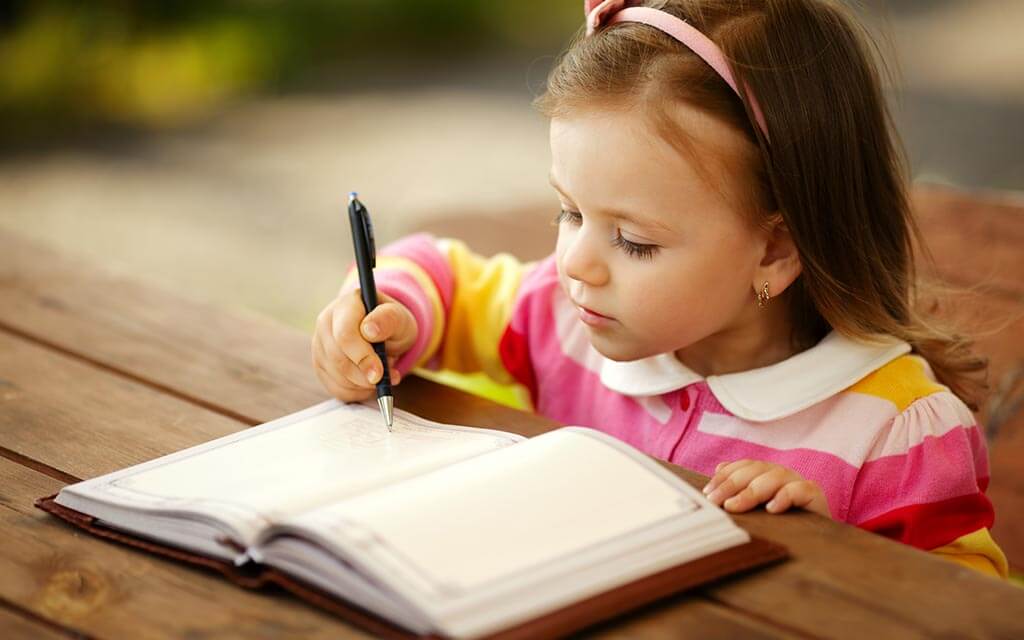 At the beginning of the line, the parent puts dots, the child circles them, and only then appends the line on his own. Next come the middle letters and, towards the end of the page, the midget letters. While the child is writing, you can ask him to pronounce the sound of a capital letter in a rough voice, the sound of a middle letter in a normal voice, and squeak the sound of a midget letter. That will be much more fun! nine0050
At the beginning of the line, the parent puts dots, the child circles them, and only then appends the line on his own. Next come the middle letters and, towards the end of the page, the midget letters. While the child is writing, you can ask him to pronounce the sound of a capital letter in a rough voice, the sound of a middle letter in a normal voice, and squeak the sound of a midget letter. That will be much more fun! nine0050
How to teach a child to write quickly?
Anna Shumilova:
— A quick letter is a continuous letter. He will be taught by a teacher at school. As soon as the literacy period ends (around February 1st grade) and the Russian language begins, you can dictate very short dictations to your child. You can use the collection of O. V. Uzorova. You can come up with short funny sentences about your child yourself. This will generate additional interest in the letter. Only practice and control over the maximum continuity of the hand while writing one word will help to write quickly.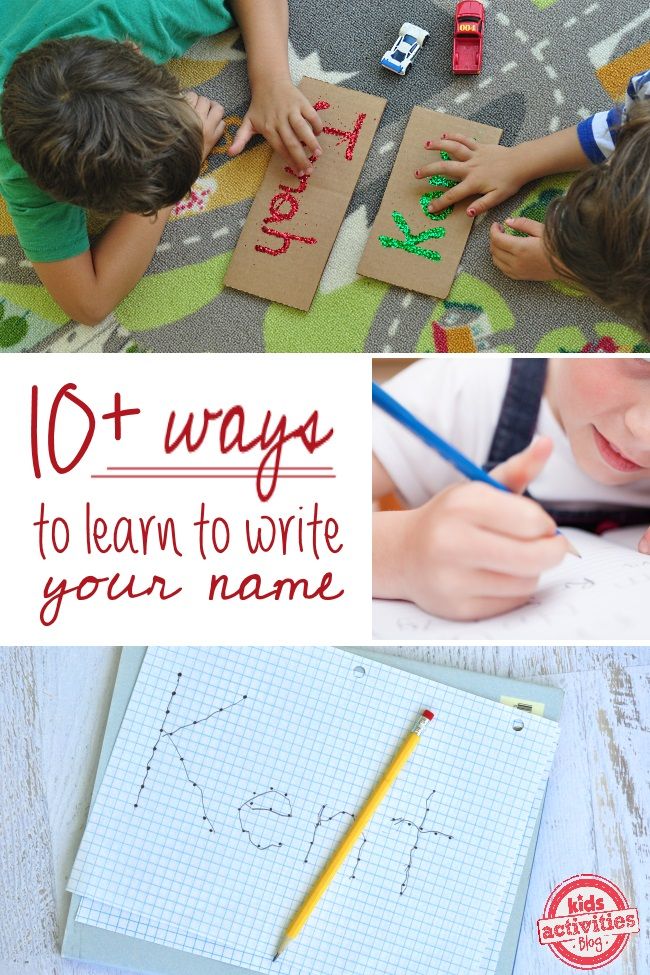 So that the child does not forget what this or that letter looks like (which happens up to grade 3), it is necessary to spend minutes of calligraphy. nine0050
So that the child does not forget what this or that letter looks like (which happens up to grade 3), it is necessary to spend minutes of calligraphy. nine0050
Read also
Motivation of a child to study at school
Komsomolskaya Pravda tells why children are waiting for the Day of Knowledge, but after a week they suddenly start to get sick and tells how to make the child motivated to study
2
How to teach a child to write at home?
Almaz Marsov, director of the online school "It's clear":
- Learning to write can be divided into 2 stages: preparing the hand for writing and writing itself. At the preparatory stage, you need to teach the child to coordinate brush movements. To do this, play and create with your child. Coloring pages, hatching tasks, as well as graphic exercises will help you: graphomotor tests, labyrinths, tasks of the series “connect by dots”, “connect by dotted lines”, “draw the second half” and so on.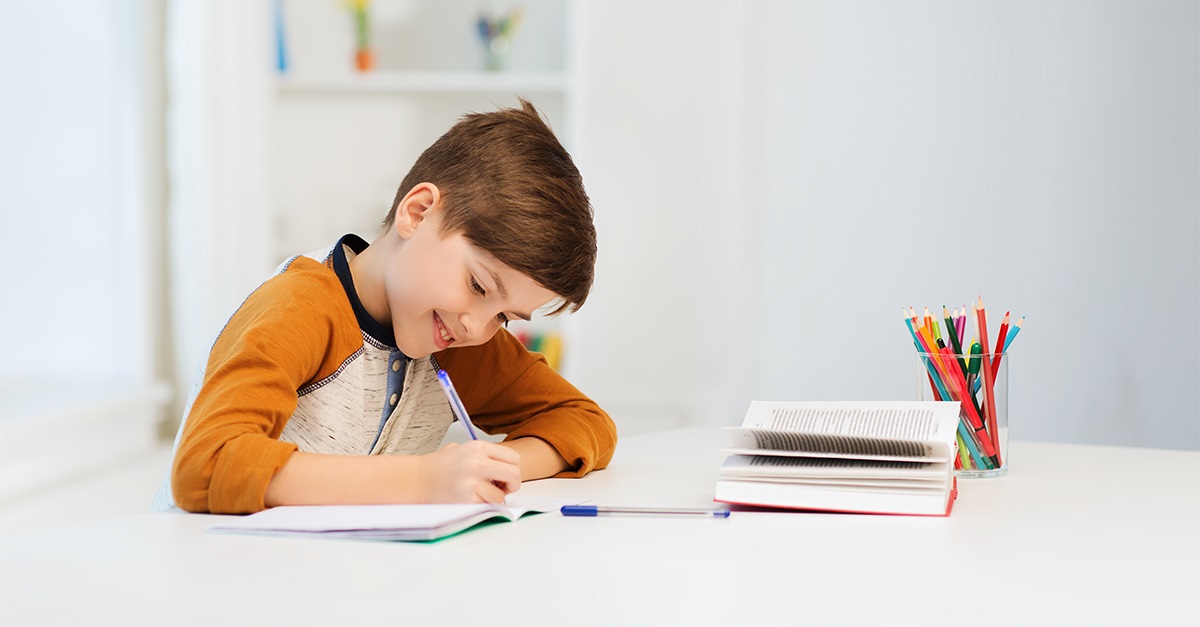 In a word, these are the tasks that will teach a child to use a pencil or pen - to set the direction of the lines, control the force of pressure, control the size of the image, the clarity of the lines and smoothness. After that, you can start writing letters and numbers. nine0003
In a word, these are the tasks that will teach a child to use a pencil or pen - to set the direction of the lines, control the force of pressure, control the size of the image, the clarity of the lines and smoothness. After that, you can start writing letters and numbers. nine0003
The main principle is to go from simple to complex. First, you can learn to write part of a letter or number, then the letter or number in full. It is important to show the child the correct sequence of writing letters and numbers: from left to right, from top to bottom. Too many children come to school with the wrong letter and are faced with the need to relearn. To avoid this, we recommend that you complete tasks with the children and control the correct spelling until they develop a writing skill. nine0003
Of course, the best helper is prescription. As soon as the child masters the letter with a hint, you can move on to a more difficult option - writing in a notebook. The more practice, the more confident and better the child's writing. Finally, the skill needs to be consolidated and improved. Write everywhere: sign drawings and crafts, write on asphalt with crayons, on misted glass with your finger - turn writing into a game and an interesting activity for a child. The more you practice, the faster and more beautiful the child will write. nine0050
Finally, the skill needs to be consolidated and improved. Write everywhere: sign drawings and crafts, write on asphalt with crayons, on misted glass with your finger - turn writing into a game and an interesting activity for a child. The more you practice, the faster and more beautiful the child will write. nine0050
What kind of games help children develop writing skills?
Anna Shumilova:
— Almost any exercise can be turned into a game. It depends on the submission of the material. You can draw letters with your nose in the air, collect letters from sweets. You can color the letters, circle them with dots, and then give them gifts. If the letter is oval, it is necessary to give objects that also contain an oval in their image. Write not only at the table, but also with chalk on the pavement, a marker on a blackboard, sand on glass or on a piece of paper, show letters on your fingers, ask you to guess which letter you are in.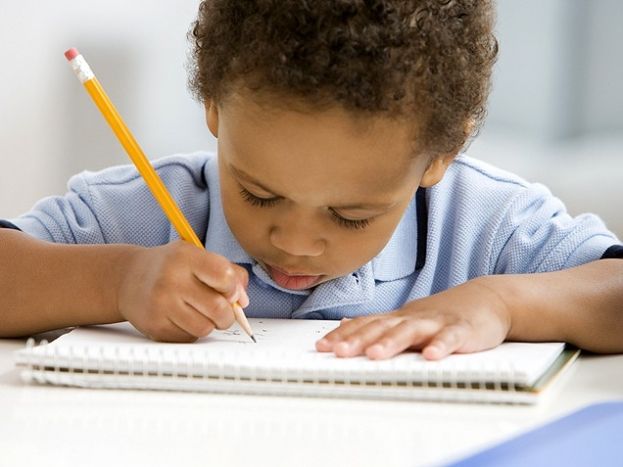 nine0050
nine0050
What determines how fast a child learns to write?
Anna Shumilova:
— We recommend taking your child to at least a few calligraphy lessons or watching video tutorials on YouTube. The teacher will tell you how to correctly determine the size of the line and letter. Pen and ink will not allow the child to rush. He will learn to breathe correctly, regulate the pressure on the pen, focus on writing, see the extraordinary artistic beauty of various styles of writing letters. This will be a great experience and will help the kid develop writing skills and strive for perfection. nine0050
Read also
How to teach a child to do homework on their own
In an ideal world, children themselves go to bed and do their homework - but alas, in reality, everything is not so. Most parents of schoolchildren still have to help them with their homework
| Chalk In the age of the Internet and technology, more and more parents are wondering if their child will need handwriting skills and why this is given such attention in schools. Knowing how to write is really importantWritten language is not just the ability to write letters. This is a complex integrative process. When we master writing, almost all areas of the brain work at the same time - and they do it in a coordinated manner, creating a whole functional system. nine0003 The visual areas are responsible for reproducing and retaining in the working memory the image of a word and the image of a letter; auditory - for working with a phoneme. That is why, when children first begin to write, they pronounce each word aloud. The motor and deep parts of the brain are responsible for sufficient muscle tone, correct subtle movements, and jewelry switching between positions. And of course, all this is accompanied by an analysis and search for semantically suitable words. Can you imagine how many tasks a child's brain solves per second when it prints a letter? nine0003 We are not just learning to write, we are creating a new functional system, linking all parts of the brain into a single network. The brain changes even morphologically. Try to do old Russian calligraphy - and you will feel how much concentration, tone, and attention it requires. If schools replace writing with typing on a keyboard, this will certainly facilitate the learning process, but this will affect the cognitive functions of children. When to start preparingBeautiful writing largely depends on how ready the child's hand is. We are talking here about the general tone, and about the posture that the child takes for writing, and, of course, about motor skills. nine0003 It is rare to find a clumsy child with good handwriting - because problems with gross motor skills drag along and difficulties with fine motor skills. Photo: Juriah Mosin / Shutterstock Preparing the hand for writing naturally starts at birth: even just playing in the sandbox, the child develops motor skills. Today, the idea of early - anticipatory - development is popular among parents, but there is simply no point in actively putting a child at prescription before 4–5 years old. By this age, it is enough to be able to hold a pencil correctly. nine0003 A child is ready to learn to write if he has the following skills:
How to get interested in writingWriting is a complex integrative function, and in order to generate interest in it, it is important to understand where it starts. nine0003 Written speech is always the transmission of information. From a child to an adult. And it starts with a drawing! When a child scribbles, brings sloppy colored pictures to mom, or gives dad scribbled paper, he is trying to share his thoughts. Therefore, it is very important to initiate drawing. Offer pencils, crayons, paints and brushes, try to draw with your fingers, put dots on paper, traces of palms, learn to color, paint over, depict the first "cephalopod" men. nine0003 Often today's children do not like to draw because of problems with general tone or its asymmetry. Gadgets, physical inactivity, incorrect posture - all this affects health, it is difficult for children to hold the pressure of a pencil. Children love to be adults, and this is the whole secret of learning: write yourself! Leave notes, write stories, read to each other and show vivid emotions when the child repeats after you. Praise for trying. Tell us how you like to receive colorful notes and hang beautiful drawings on the refrigerator. Create a gallery and save all the creations of children! Show that you care about what the child wants to convey to you in this image! All this is the basis of written speech. The pleasure of drawing gradually turns into the pleasure of writing letters, and then words. If a child does not have such a desire by the age of 5–6, return to the previous levels: draw and make scribble notes. How can I help my child learn to write?First of all, in a natural way, through everyday life. Cooking, cleaning, washing - it's all about motor skills. nine0003 It would be useful to include drawing, passing mazes, playing with geoboards and mosaics, and graphic dictations in your daily activities. Photo: sakkmesterke / ShutterstockYou can also use special training aids for orientation on the sheet and in the image of the letter. For example, KUMON notebooks "Spatial Thinking" and "Learning to write block letters of the Russian alphabet." The latter has several advantages: |

 We asked Anna Polishchuk, clinical and perinatal psychologist, child neuropsychologist, author of the educational project "Children Ready for the Future", to talk about the importance of writing and proper preparation for it.
We asked Anna Polishchuk, clinical and perinatal psychologist, child neuropsychologist, author of the educational project "Children Ready for the Future", to talk about the importance of writing and proper preparation for it. 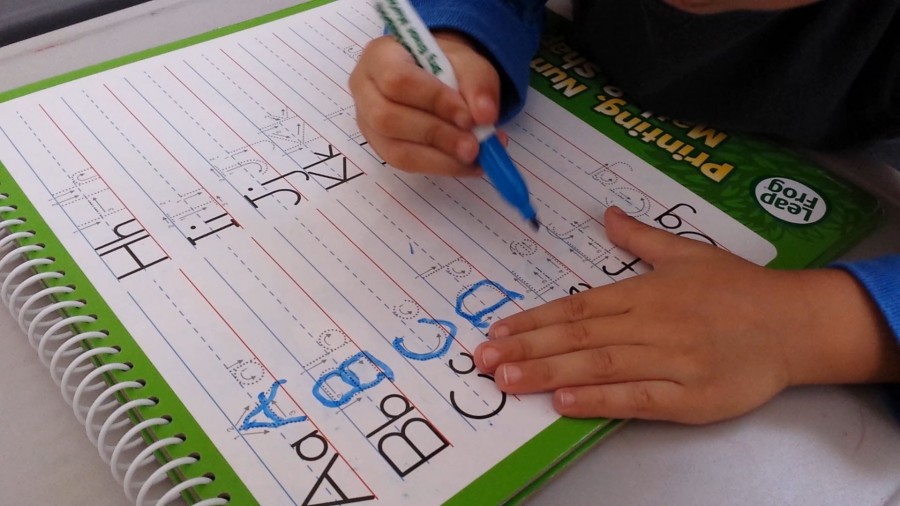
 Jumping, jumping rope games, hopscotch, cycling, rope parks contribute to the same goal.
Jumping, jumping rope games, hopscotch, cycling, rope parks contribute to the same goal.  Adults need to encourage this. The child encodes his words in lines and dashes, tries to convey an idea through an image - this is an analogue of the encryption system in a letter: we also encode the meaning in letters.
Adults need to encourage this. The child encodes his words in lines and dashes, tries to convey an idea through an image - this is an analogue of the encryption system in a letter: we also encode the meaning in letters.  nine0003
nine0003 